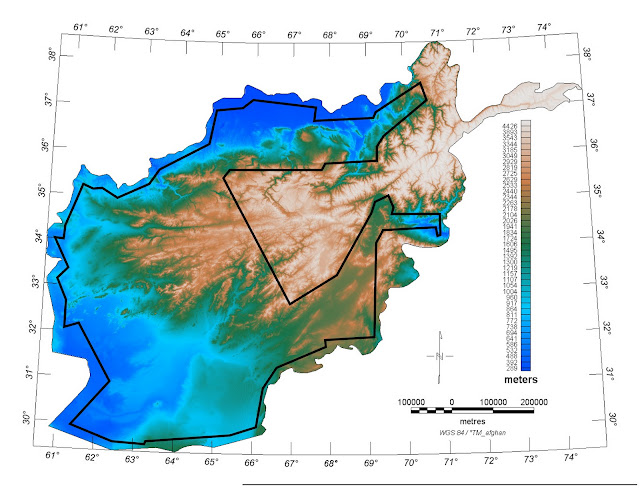-
Afghanistan’s Mineral Wealth: Gold Mine, Curse, or Illusion?
June 15, 2010 By Schuyler NullAccording to The New York Times, U.S. officials have discovered a veritable bonanza of heavy metals and rare earth minerals in Afghanistan that have the potential “to fundamentally alter the Afghan economy and perhaps the Afghan war itself”:The previously unknown deposits — including huge veins of iron, copper, cobalt, gold and critical industrial metals like lithium — are so big and include so many minerals that are essential to modern industry that Afghanistan could eventually be transformed into one of the most important mining centers in the world, the United States officials believe.
Reaction to the announcement has been mixed, with both Foreign Policy and Wired bloggers expressing skepticism about the timing of the announcement – in the midst of a difficult period of the war – and pointing out that the “discovery” is old news.
Others have expressed hope that the find, worth an estimated $1 trillion, might provide an injection of much-needed capital into one of the world’s worst economies. Environmental security expert Saleem Ali of the University of Vermont told Public Radio International’s The World that “there’s an opportunity now for the country to develop outside of a predominantly drug-dependent economy and if properly managed the minerals could provide a catalyst for all kinds of other activities as well.”
Afghanistan’s rare earth minerals in particular might prove to be extremely valuable as global demand continues to grow for these critical components of renewable energy technology and advanced electronics. The New York Times reports that an internal Pentagon memo says Afghanistan has the potential to become the “Saudi Arabia of lithium”:Just this month, American geologists working with the Pentagon team have been conducting ground surveys on dry salt lakes in western Afghanistan where they believe there are large deposits of lithium. Pentagon officials said that their initial analysis at one location in Ghazni Province showed the potential for lithium deposits as large of those of Bolivia, which now has the world’s largest known lithium reserves.
The existence of mineral reserves in Afghanistan is not new news, nor is foreign interest in them (see our coverage of Chinese copper investments at Aynak earlier this year). But the size of these resources warrants attention and raises new questions about the possibility of the unstable country falling victim to the natural resource curse – remaining mired in poverty while generating billions of dollars for an elite few.
Mineral wealth has a long history of fueling conflict in unstable countries, such as Sierra Leone, Nigeria, and the Democratic Republic of Congo. The DRC’s mining laws – which, like Afghanistan’s, were designed by the World Bank – have not prevented violent struggle to control the country’s valuable resources, as described by John Katunga in ECSP Report 12.
How can Afghanistan’s newly discovered mineral resources be developed without funding insurgents or fueling new conflicts? USAID’s Minerals and Conflict Toolkit offers a start with a set of recommendations and discrete steps that development agencies should take to avoid exacerbating the links between mining, valuable resources, and violent conflict.
Stay tuned for more analysis on Afghanistan’s development, resource curse dynamics, and what this all means for the continuing conflict.
Sources: Foreign Policy, National Public Radio, The New York Times, Public Radio International, Wired.
Photo Credit: “Remote Sensing Survey 2006” courtesy of the U.S. Geological Survey.
 A Publication of the Stimson Center.
A Publication of the Stimson Center.




